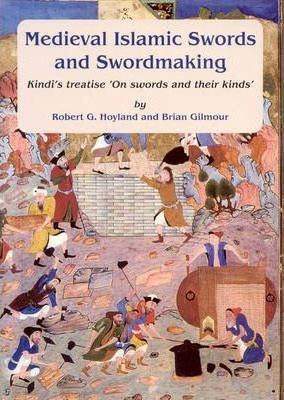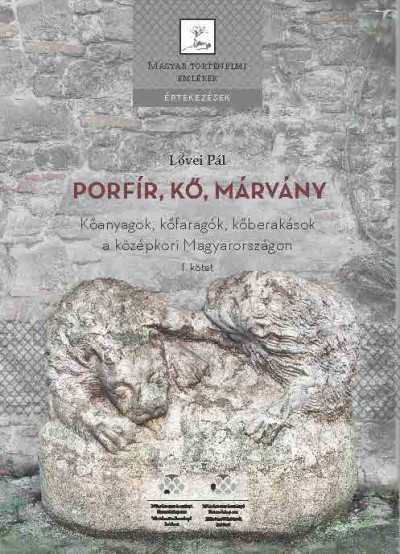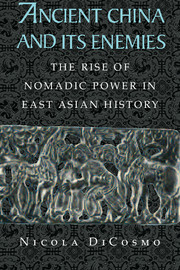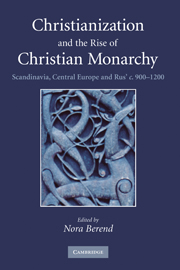Kedves Olvasóink!
Havonta frissülő könyvajánló rovatunkkal a könyvtárunkba frissen érkezett kiadványokra szeretnénk felhívni a figyelmüket. A könyvek kölcsönözhetők, hozzáférhetőségükről az online katalógusban informálódhatnak, további felvilágosítást a könyvtárosoktól kérhetnek.
A könyvtár nyitva tartásáról és a kölcsönzés feltételeiről a könyvtár oldalán tájékozódhatnak.

Robert G. Hoyland – Bruce Gilmour: Medieval Islamic Swords and Swordmaking : Kindi's Treatise on Swords and Their Kinds
Oxford, Gibb Memorial Trust 2018
Raktári jelzet: R-40.448/2022
Nyelv: Angol
One of the problems pervading the study of medieval Islamic technology is the lack of surviving technical treatises. Tradition tended to be handed down by example and by word of mouth, and apprenticeships could last for decades. Fortunately, however, occasional treatises do exist. The treatise 'On swords and their kinds' was written by the 9th century Muslim philosopher Ya'qub ibn Ishaq al-Kindi. This work was commissioned by a powerful patron of scholarship, the Abbasid caliph Mu'tasim, and the content of the treatise presumably reflects the ruler's general interest in his army and its equipment, and his specific interest in the technical aspects of sword production. In this work, Kindi discusses the difference between iron and steel, distinguishes different qualities of sword blade, and different centers of sword smithing. He refers to the Indian Ocean trade in steel ingots and to the distinctive character of European swords of the period. He includes technical terms used by the makers, and distinguishes swords by their physical features - form, measurements, weight, watered pattern, sculptured details, or inlaid ornaments.
This publication includes the text and a translation of Kindi's treatise, and a detailed commentary on the work. The volume also includes a translation of Friedrich Schwarzlose's work on swords, which is based on the hundreds of references to swords in early Arabic poetry. Written in German, this extraordinary compendium of information was first published some 120 years ago; this volume makes it available again, and for the first time in English.

Lővei Pál: Porfír, kő, márvány I-II. kötet – Kőanyagok, kőfaragók, kőberakások a középkori Magyarországon
Budapest, Bölcsészettudományi Kutatóközpont, 2022
Sorozat: Magyar Történelmi Emlékek, Értekezések
Raktári jelzet: R-40.483/2022/2
Nyelv: Magyar
Lővei Pál 1979-ben diplomázott az Eötvös Loránd Tudományegyetem matematikus- művészettörténet szakán. 1981-1982-ben doktorált az Árpád-házi Szent Margit síremlékéről írt disszertációval, PhD-fokozatot 1997-ben, MTA doktora címet 2010-ben szerzett (disszertációja címe: Bevezető fejezetek a középkori Magyarország síremlékeinek katalógusához). 1979-2013 között az állami műemlékvédelmi szervezet tudományos kutatója, 1992-2007 között a kutatási osztály vezetője. 2013-tól az MTA, majd a BTK Művészettörténeti Intézete tudományos tanácsadója. 2001- 2008 között az MTA Művészettörténeti Tudományos Bizottsága alelnöke, 2014-2021 között elnöke. 2008-2012 között a Magyar Régészeti és Művészettörténeti Társulat alelnöke, 2012-2015 között elnöke. 2004-2008 között a Nemzetközi Művészettörténeti Bizottság (Comite International d'Histoire l'Art - CIHA) magyar póttagja, 2008-2012 között tagja. 1979-től dolgozik az azóta elhunyt Varga Líviával és Engel Pállal együtt a középkori Magyarország síremlékeinek katalógusán. 1988-2012 között a "Lapidarium Hungaricum. Magyarország építészeti töredékeinek gyűjteménye" műemléki kutatási program résztvevője, 2004-től vezetője. A BTK Lendület Középkori Magyar Gazdaságtörténet Kutatócsoport tagja. 2014-től az MTA művészettörténeti folyóirata, az Acta Historia Artium főszerkesztője. A kötet a szerző a kőanyagok és kőfaragás témakörében végzett negyvenévnyi munkájának az összefoglalása.

Nicola Di Cosmo: Ancient China and its Enemies: The Rise of Nomadic Power in East Asian History
Cambridge, Cambridge University Press, 2010
Raktári jelzet: R-36.636/2017
Nyelv: Angol
This comprehensive history of the northern Ancient China frontier of China through the first millennium B.C. details the formation of two increasingly distinct cultural areas: the sedentary Chinese and the northern nomads. Nicola Di Cosmo explores the tensions existing between these two worlds as they became progressively more polarized, with the eventual creation of the nomadic Hsiung-nu empire in the north, and of the Chinese empire in the south. Di Cosmo investigates the origins of the antagonism between early China and its "barbarian" neighbors.

Nora Berend (ed.): Christianization and the rise of Christian Monarchy: Scandinavia, Central Europe and Rus' c. 900–1200
Cambridge, Cambridge University Press, 2009
Raktári jelzet: R-40.424/2022
Nyelv: Angol
This 2007 text is a comparative, analysis of one of the most fundamental stages in the formation of Europe. Leading scholars explore the role of the spread of Christianity and the formation of new principalities in the birth of Denmark, Norway, Sweden, Bohemia, Hungary, Poland and Rus' around the year 1000. Drawing on history, archaeology and art history, and emphasizing problems related to the sources and historiographical debates, they demonstrate the complex interdependence between the processes of religious and political change, covering conditions prior to the introduction of Christianity, the adoption of Christianity, and the development of the rulers' power. Regional patterns emerge, highlighting both the similarities in ruler-sponsored cases of Christianization, and differences in the consolidation of power and in institutions introduced by Christianity. The essays reveal how local societies adopted Christianity; medieval ideas of what constituted the dividing line between Christians and non-Christians; and the connections between Christianity and power.






